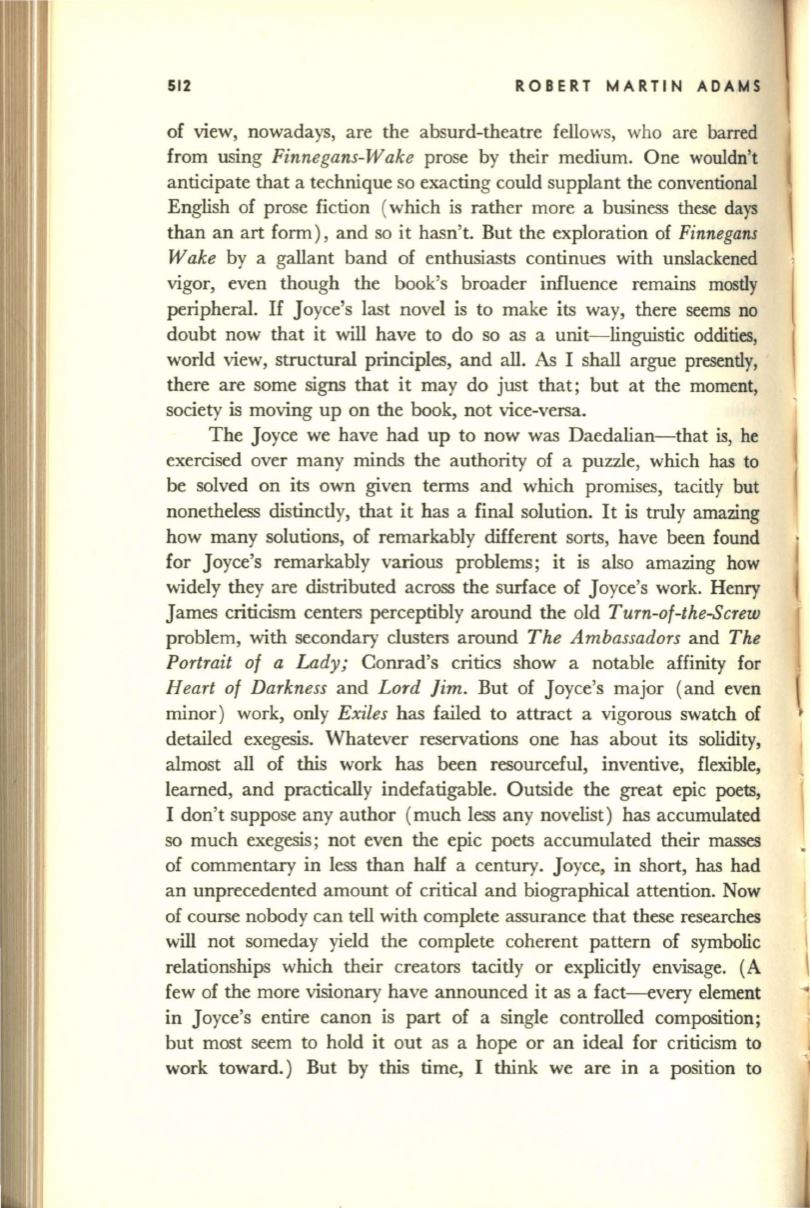
512
ROBERT MARTIN ADAMS
of view, nowadays, are the absurd-theatre fellows, who are barred
from using
Finnegans-Wake
prose by their medium. One wouldn't
anticipate that a technique so exacting could supplant the conventional
English of prose fiction (which is rather more a business these days
than an art form), and so it hasn't. But the exploration of
Finnegans
Wake
by a gallant band of enthusiasts continues with unslackened
vigor, even though the book's broader influence remains mostly
peripheral.
If
Joyce's last novel is to make its way, there seems no
doubt now that it will have to do so as a unit- linguistic oddities,
world view, structural principles, and all.
As
I shall argue presently,
there are some signs that it may do just that; but at the moment,
society is moving up on the book, not vice-versa.
The Joyce we have had up to now was Daedalian-that is, he
exercised over many minds the authority of a puzzle, which has to
be solved on its own given terms and which promises, tacitly but
nonetheless distinctly, that
it
has a final solution. It is truly amazing
how many solutions, of remarkably different sorts, have been found
for joyce's remarkably various problems;
it
is also amazing how
widely they are distributed across the surface of Joyce's work. Henry
James criticism centers perceptibly around the old
Turn-of-the-Screw
problem, with secondary clusters around
The Ambassadors
and
The
Portrait of a Lady;
Conrad's critics show a notable affinity for
Heart of Darkness
and
Lord Jim.
But of joyce's major (and even
minor) work, only
Exiles
has failed to attract a vigorous swatch of
detailed exegesis. Whatever reservations one has about its solidity,
almost all of this work has been resourceful, inventive, flexible,
learned, and practically indefatigable. Outside the great epic
poets,
I don't suppose any author (much less any novelist) has accumulated
so much exegesis; not even the epic poets accumulated their masses
of commentary in less than half a century. Joyce. in short,
has
had
an unprecedented amount of critical and biographical attention. Now
of course nobody can tell with complete assurance that these researches
will not someday yield the complete coherent pattern of symbolic
relationships which their creators tacitly or explicitly envisage. (A
few of the more visionary have announced it as a fact-every element
in Joyce's entire canon is part of a single controlled composition;
but most seem to hold it out as a hope or an ideal for criticism to
work toward.) But by this time, I think we are in a position to


